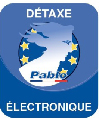No products
Prices are tax included
Categories
Last blog articles
Search on blog
A wing is like a pair of shoes:The most important thing is to feel comfortable.
To select a wing, we tend to focus on the fiscal side. This is one of the elements that should guide your choice but it does not particularly have to be the most important.
Summary of things to remember to make your choice.
WING CATEGORY
The wings are tested and classified as category A - B - C or D depending on the level of control required (EN).
Before selecting a category, the pilot must evaluate its theoretical and practical level being honest with himself (this is certainly the most difficult part to achieve).
One can possibly read comparative article or approval reports but above all, do not hesitate to seek advice from your instructor who is best placed to evaluate his students.
Compare extensions
A more elongated wing glides better but will still be more demanding.
Check suspension lines
Thin and non-sheathed suspension lines will be more efficient but will tend to create nodes more easily. Its life is much reduced (the suspension lines must be revised each year).
TAKEOFF WEIGHT
PTV (Total Takeoff Weight) indicated in the technical data includes the weight of the entire wing, harness, reserve parachute and pilot dressed (add 15kg to 20kg average to the naked pilot weight).
Underpowered (heavier than the PTV max), you will have a dynamic wing but fall faster, overpowered (lighter than the mini PTV) you will have a better drop rate but the sail will tend to fly slowly.
Note that the manufacturer guarantees the behavior of a sail (Class A, B, C, D) in a weight range. Out of this range does not mean that the wing stops flying, but it will not have the same reactions as in the approval tests.
| Example: | |
| - | A B asymmetric closure may eventually become A charging less the wing and squeezing a little more lap. |
| - | An A asymmetrical closure may eventually become B by charging more the wing and by loosening a little more ventral |
Note that PPG pilots will tend to not count the weight of the engine.
THE EQUIPEMENT CONDITIONS
For a car, engine, bodywork and clean seats are not synonymous with good business (prefer a dirty car easy to start to a clean car hard to start). For a used wing, visual controls allow you to make an initial subjective idea, but are far from sufficient. The only objective assessment that deserves your attention is the record of review by a professional. It provides a comprehensive assessment by measuring the levels of porosity of the fabric, strength of the lines and setting of the wing.
HARNESSES
We recommend that you invest in a good harness that you will definitely keep longer than your first wing in which your body will be well maintained. A harness well suited greatly increases your pleasure in flight (like a pair of shoes, do not hesitate to try them).
In plain, about 200m lower elevations, it is common to go on foot. Prefer in this case mild and reversible harnesses that allow you to save more than the weight of a bag.
RESCUE
A parachute is a real investment because it can last more than 10 years. More reason not to be mistaken in choosing the size. The main criterion is recommended by the manufacturer (this is where the paramotor pilot must also take into account the weight of the engine) PTV. The lighter parachutes are often more expensive but can also be more fragile over time.
In all cases, a backup should be aired and repacked each year. (MosAiles folds your parachute but can also provide courses).
PRICES
The price of the occasion is, as everywhere, set by supply and demand. Wings classified C are less requested than wings classified A. Wings over 5 years are less popular.
The "deal" is to find the "good stuff" to his budget and not put themselves in danger because they wanted € 100 scratch.
Here is the price range for the largest category on the second hand market, the EN B:
Between 3000 and 3500 €, new paragliding (MosAiles will certainly make you a discount).
Between 2000 and 2500 €, demonstration wings, with few flights and record review.
Between 1500 and 2000 €, beautiful very recent occasions (the pilot does not like the color anymore, wants to acquire the new model or was mistaken in his choice).
Between 1000 and 1500 €, older models in good condition and revised.
Less than € 1000 we find all kinds of sails but mostly "unsellable" models "not reviewed."





 Black Flyday on new ITV Piper 2Black Flyday on new ITV Piper 2
Black Flyday on new ITV Piper 2Black Flyday on new ITV Piper 2